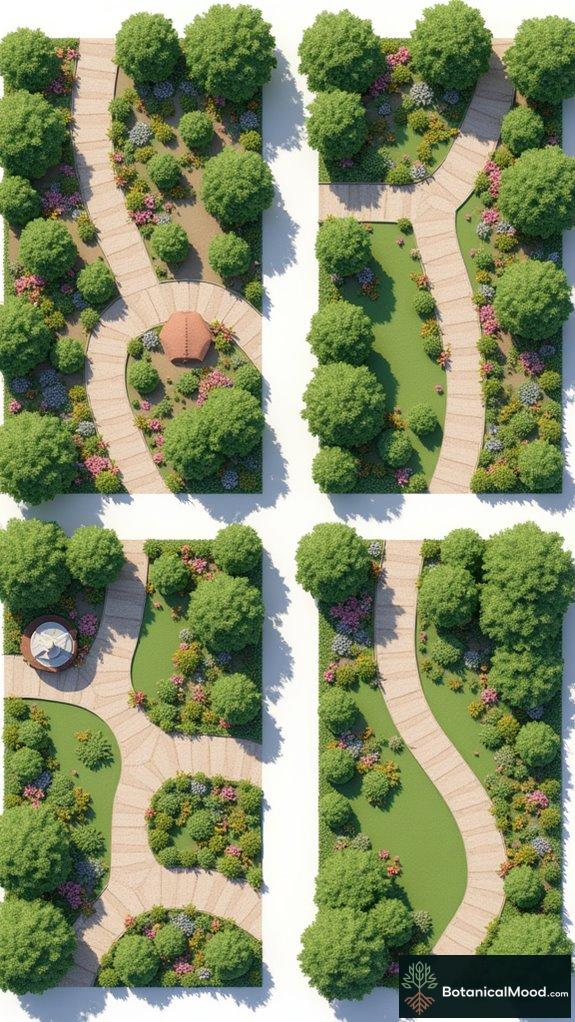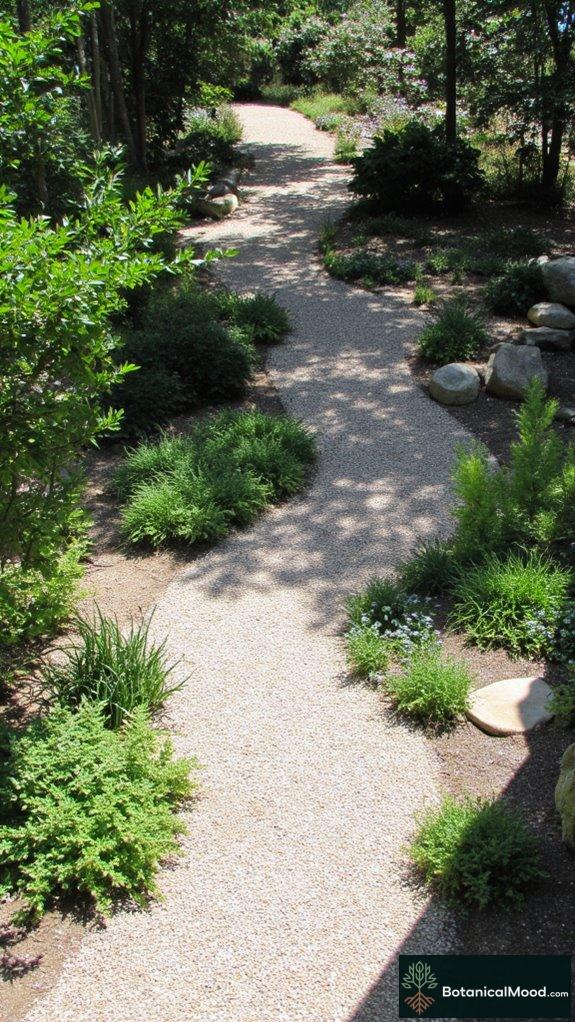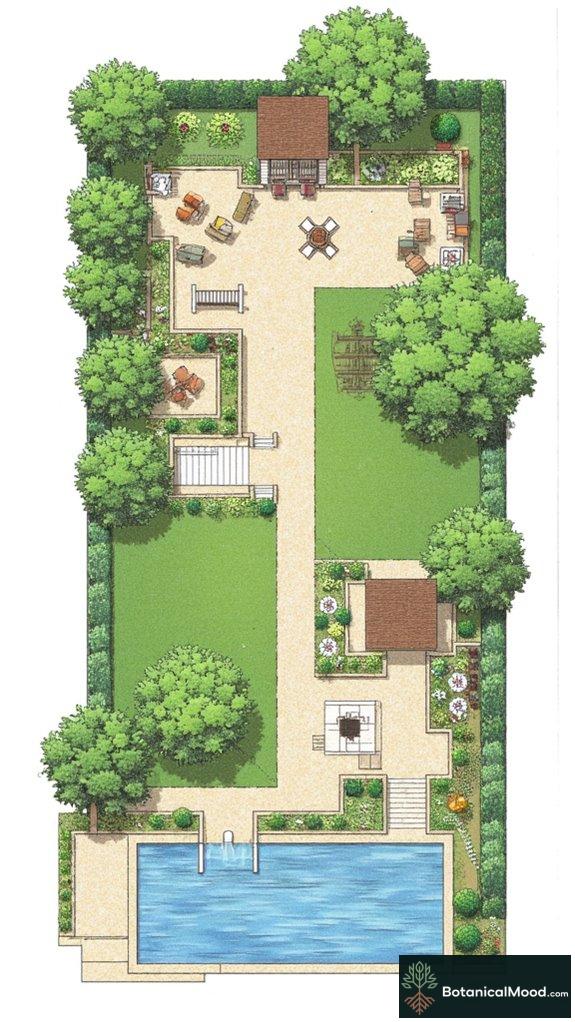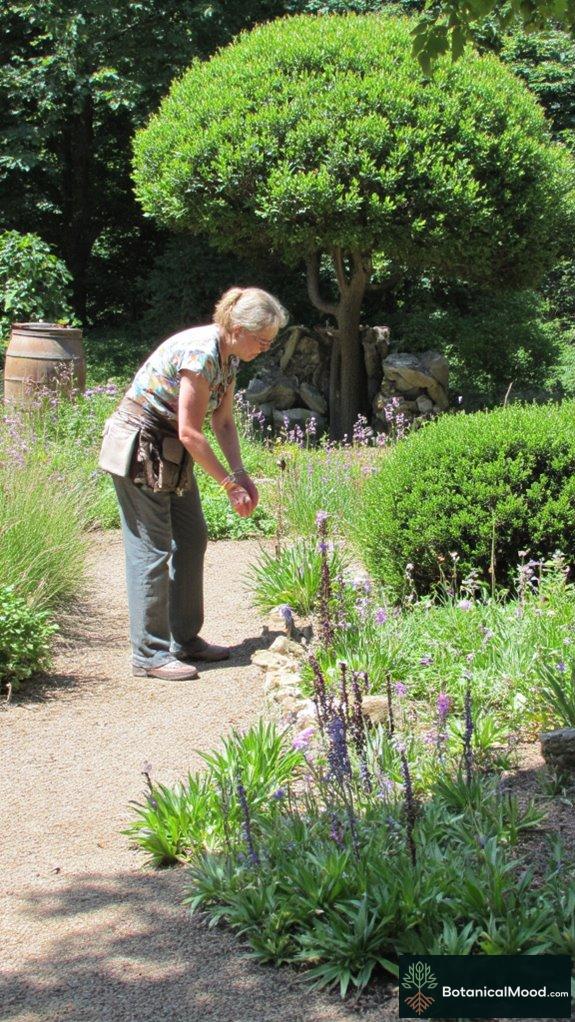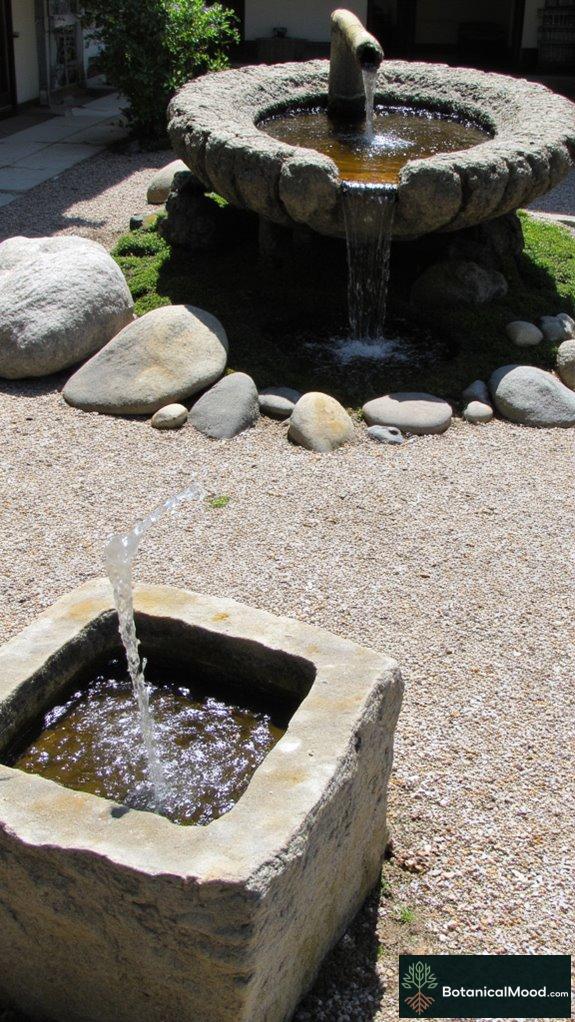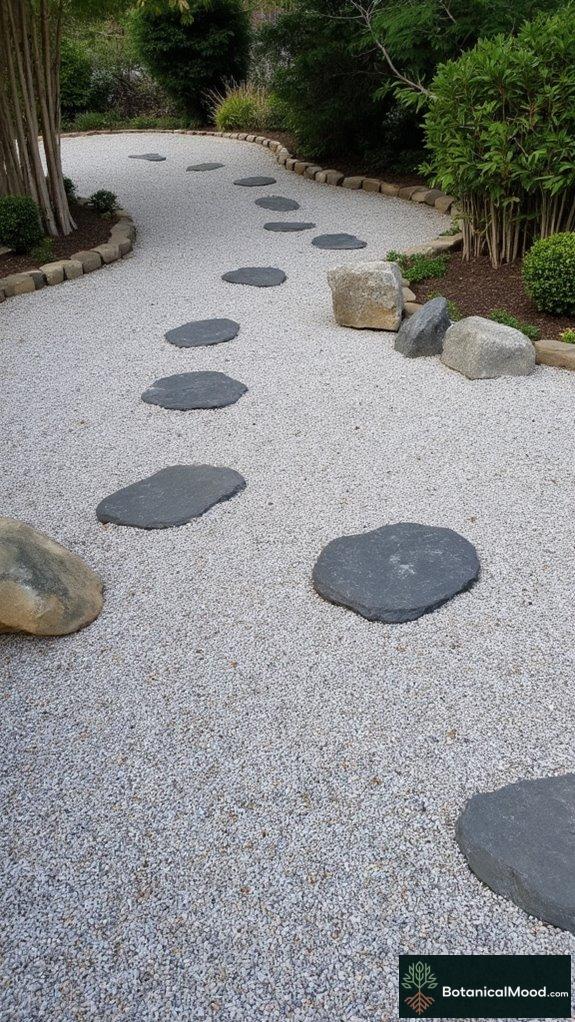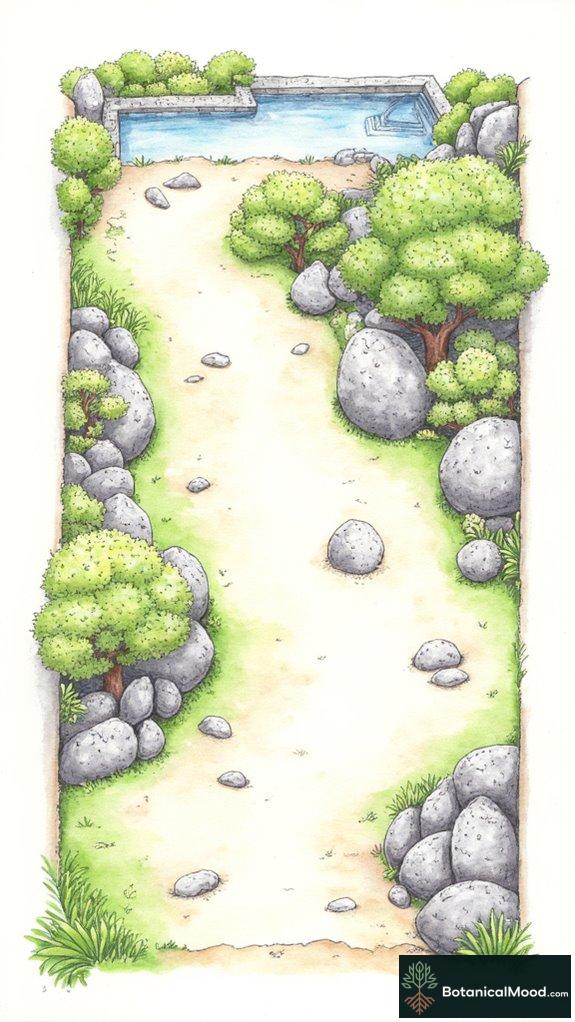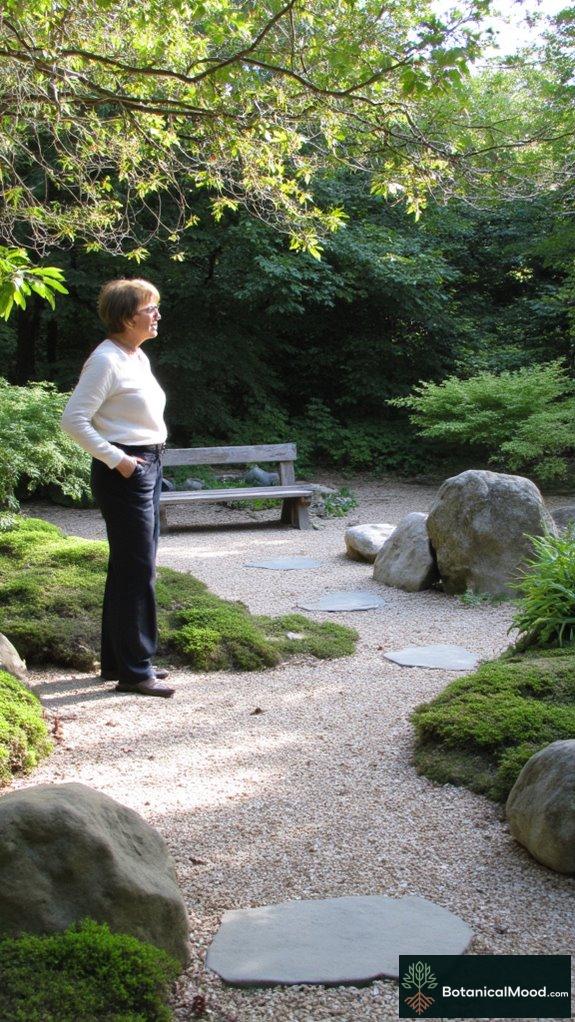Ever thought about escaping to a woodland shade garden? Trust me, it’s like a spa day for your soul.
I started my own journey by planting *Acer palmatum* and some *Hosta*—because who doesn’t love a little botanical drama? I added paths of natural stone for that “I woke up like this” vibe, along with comfy seating to sip my coffee in the morning chill.
But you know what? Biodiversity is where it’s at. Like, if I can mimic a mini-Kirstenbosch in my backyard, who needs a vacation?
Feeling intrigued?
The Day My Garden Became a Jungle
One day, I went all-out with this wild idea: let’s plant ferns in containers! Long story short, they took over my patio, and instead of a serene retreat, I was living in a scene from *Jumanji*.
Yet, it gave me a cozy sanctuary I never knew I needed. I not only learned about shade-loving plants but also embraced the vibrant chaos of nature. It made me realize that sometimes, you need a little mess to create beauty.
And it’s true—whether you’re designing an urban escape or aiming for a charming clutter, the heart of it all is embracing unpredictability. What secret garden creation will you try next?
Quick Takeaways
- Choose diverse foliage plants like *Acer palmatum* and *Hosta* for lush greenery and enhanced texture in shaded areas.
- Incorporate winding pathways using natural materials for safety and an engaging garden experience.
- Add sustainable seating options, such as hardwood or metal benches, with comfortable outdoor cushions for relaxation.
- Utilize vertical elements like trellises, entwined with low-light plants, to create visual intrigue and maintain open pathways.
- Enhance design flexibility with containers in various heights, allowing for seasonal plant experimentation while improving garden aesthetics.
Choosing the Right Plants for Shade and Texture

When you step into a shaded garden, it’s like entering a serene sanctuary, where the dappled sunlight dances upon the ground, inviting an array of textures and hues to flourish.
Selecting the right plant combinations is crucial for creating a safe and pleasing retreat. Consider diverse foliage varieties such as the majestic *Acer palmatum* with its stunning leaves, and the enticing *Hosta* that brings lush greenery.
Incorporating layers of plants guarantees a rich tapestry of color and texture, while ground covers like *Ajuga reptans* can help prevent soil erosion.
For heightened visual interest, mix in the delicate blossoms of *Pulmonaria*, which offer a contrast to broader leaves.
Additionally, using native plant species can significantly enhance biodiversity while ensuring that your garden thrives in its shaded environment.
Every choice feeds the enchanting harmony of nature’s design.
Designing Functional Spaces With Pathways and Seating

A beautifully designed garden space beckons you to explore its hidden corners, and pathways paired with comfortable seating can transform a woodland shade garden into an inviting retreat.
Choosing the right pathway materials, such as natural stone, gravel, or permeable pavers, guarantees safety and stability while enhancing the garden’s aesthetic.
For seating styles, I prefer benches crafted from sustainably sourced hardwood or weather-resistant metal, offering both comfort and durability.
Incorporating diverse textures with your seating, such as cushions made from outdoor fabrics, invites relaxation.
As you wander along the winding paths, let your senses engage with the lush surroundings, creating a serene escape—this design philosophy drives my passion for developing beautiful, functional spaces in the garden. Including well-placed seating areas allows for moments of reflection among the lush shade plants that thrive in woodland gardens.
Incorporating Vertical Elements for Visual Interest

When choosing plants, look for varieties that thrive in low light—nature’s artistry truly shines in these shadows.
By intertwining structures with flora, I maximize both beauty and safety, ensuring that pathways remain open and the retreat feels harmonious.
Every element plays its part in crafting a serene ambiance, elevating your garden experience.
Utilizing Containers for Flexibility and Style

While embracing the unique constraints of a woodland shade garden, I’ve found that utilizing containers not only enhances flexibility but also injects personal style into the design.
Container selection plays an essential role; I often opt for materials like terracotta or durable resin to withstand our area’s varying weather conditions.
Through stylish arrangements, I incorporate ferns such as *Polystichum acrostichoides* and shade-tolerant annuals like *Impatiens walleriana*, creating vivid textures and colors.
Placing containers at different heights adds dimension and visual intrigue. Whether grouped or strategically spaced, they allow me to experiment with seasonal plants and adapt the garden’s look effortlessly.
My passion for this approach inspired me to share perspectives on creating an enchanting woodland retreat, ensuring safety and beauty intertwined.
Creating a Lush, Sustainable Ecosystem

Through careful selection and design, I’m crafting a woodland refuge that showcases the beauty of our ecosystem while providing a serene retreat.
Integrating native plants like Trillium grandiflorum and Actaea racemosa, I’m enhancing biodiversity benefits, ensuring the area flourishes with life.
Layering plants creates visual interest, while also supporting a balanced ecosystem.
I’m incorporating diverse textures and colors, such as the soft hues of ferns and the vibrant foliage of Acer palmatum, contributing to an inviting atmosphere, while fostering wildlife habitats.
By prioritizing sustainable practices, such as composting and rainwater collection, I’m ensuring our garden supports both ecological health and safety.
Together, we can nurture nature’s beauty, creating a lush, sustainable ecosystem that thrives harmoniously right in our backyards.
Case Study: Serene Forest Refuge

In envisioning the Serene Forest Refuge, I sought to create a sanctuary that harmonizes with its woodland surroundings, utilizing architectural features designed to enhance the natural beauty of the environment.
This forest retreat emerged through the integration of cross-laminated timber and charred wood shingles, ensuring durability while embracing visual harmony. I prioritized expansive glass walls for natural light and panoramic views, fostering a serene connection with the forest. To enhance the tranquil atmosphere, I incorporated earthy colors that evoke the essence of the surrounding landscape.
Low-impact building practices respected local biodiversity, while organic, rounded forms blended seamlessly into the scenery.
The result? A tranquil atmosphere that promotes safety and health, as strategically placed windows enhanced ventilation and air quality.
This design inspiration reflects my commitment to sustainable environments, paving the way for future expansion without ecological harm.
Efficient Plant Arrangement Strategies

Efficient plant arrangement strategies are essential for creating a vibrant woodland shade garden that thrives in harmony with its surroundings.
Employing effective layering techniques will enhance visual depth and ecological function.
- Position large native trees, like Quercus (oaks), as the upper canopy.
- Utilize flowering dogwoods (Cornus florida) and azaleas for the woody understory.
- Choose ground-level plantings such as blue wood aster (Aster cordifolius) for robust coverage.
- Implement proper plant spacing to allow airflow and minimize competition.
- Consider microclimate variations, selecting shade-tolerant species to suit each area.
Through thoughtful arrangements, I’ve witnessed how these plants not only create a stunning retreat but also nurture local wildlife while enhancing soil health.
Meet the Garden’s Visionary

Mary Thompson, hailing from the lush terrains of Oregon, found her inspiration for the woodland shade garden through years of exploring natural habitats, igniting her passion for creating a serene retreat that harmonizes with nature.
To bring her vision to life, Thompson engaged in a collaborative design process, partnering with local horticulturists and environmental architects. Her approach combined ecological principles with aesthetic sensibility, utilizing layered plant structures and strategic placements to create intimate spaces that flourish in shades.
For the installation, Thompson employed tools from brands like Fiskars and Bosch, appreciating their ergonomic designs. She incorporated accessories such as organic mulch from EcoScraps and water features sourced from Aquascape, ensuring an ecologically supportive and visually engaging space that invites both tranquility and biodiversity.
Iconic Botanical Sanctuaries

Iconic botanical sanctuaries stand as living monuments to the beauty and diversity of plant life, offering not just a refuge for nature’s wonders, but also a space where conservation and education thrive.
Take the Singapore Botanic Gardens, where lush terrains house over 3,000 orchid varieties, promoting educational initiatives around botanical diversity.
Similarly, the Royal Botanic Gardens, Kew, plays a crucial part in plant conservation while showcasing cultural significance through historical collections.
At Kirstenbosch in Cape Town, the unique Cape Floral Kingdom preserves essential biodiversity, while the Arctic-Alpine Botanical Garden in Tromsø emphasizes native flora in a naturalistic setting.
These iconic sites not only enhance our understanding but also inspire reverence for nature, solidifying the importance of protecting our planet’s green heritage.
Summary
As I design my woodland shade garden retreat, I focus on plants like Helleborus niger and Heuchera to create a calm haven. I’ll add rustic seating and a vintage trellis for climbing vines, making it a living tapestry, a true oasis.
I’d love to hear about your own experiences with shade gardening. What plants have you found work best?
Feel free to share pictures of your garden and tell me how you designed it. I’m eager to see your creations!
References
- https://www.monrovia.com/be-inspired/shade-garden-design-tips-and-plants.html
- https://phsonline.org/for-gardeners/gardeners-blog/shade-garden-ideas
- https://www.finegardening.com/article/a-woodland-garden-design
- https://extension.umn.edu/planting-and-growing-guides/gardening-shade
- https://www.monrovia.com/be-inspired/design-a-lush-woodland-garden.html
- https://www.finegardening.com/article/design-an-engaging-naturalistic-garden-in-the-shade-plant-ids
- https://carolynsshadegardens.com/2012/04/02/your-native-woodland-if-you-build-it-they-will-come/
- https://www.houzz.com/discussions/2223532/very-discourageed-about-my-woodland-gardening
- https://www.homestyler.com/article/create-a-serene-forestthemed-bedroom
- https://greenberg.design/inspiration/biophilic-design-bringing-nature-indoors-bay-area-homes/
- https://www.youtube.com/watch?v=oMxRDcxLT-I
- https://architecturecompetitions.com/architecture-projects/residential-cabins-featuring-cross-laminated-timber-and-charred-wood-shingles-in-a-forested-retreat
- https://stockcake.com/i/serene-forest-retreat_1077252_1037779
- https://architecturecompetitions.com/architecture-projects/elevated-shelter-embracing-nature-with-charred-wood-and-translucent-glass
- https://www.terrapinbrightgreen.com/reports/14-patterns/
- https://www.sp-architects.com/project/forest-refuge-insight-meditation-society-barre-ma
- https://www.tripointehomes.com/blog/how-to-create-a-calm-wellness-focused-home-4-serene-design-strategies/
- https://www.pendulummag.com/design-architecture/2022/3/17/ny-lake-house
- https://www.missouribotanicalgarden.org/Portals/0/Gardening/Gardening Help/Factsheets/Shade Gardening – Plants25.pdf
- https://www.shawnee.k-state.edu/lawn-garden/Woodland Garden Fact Sheet.pdf

